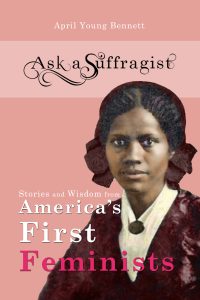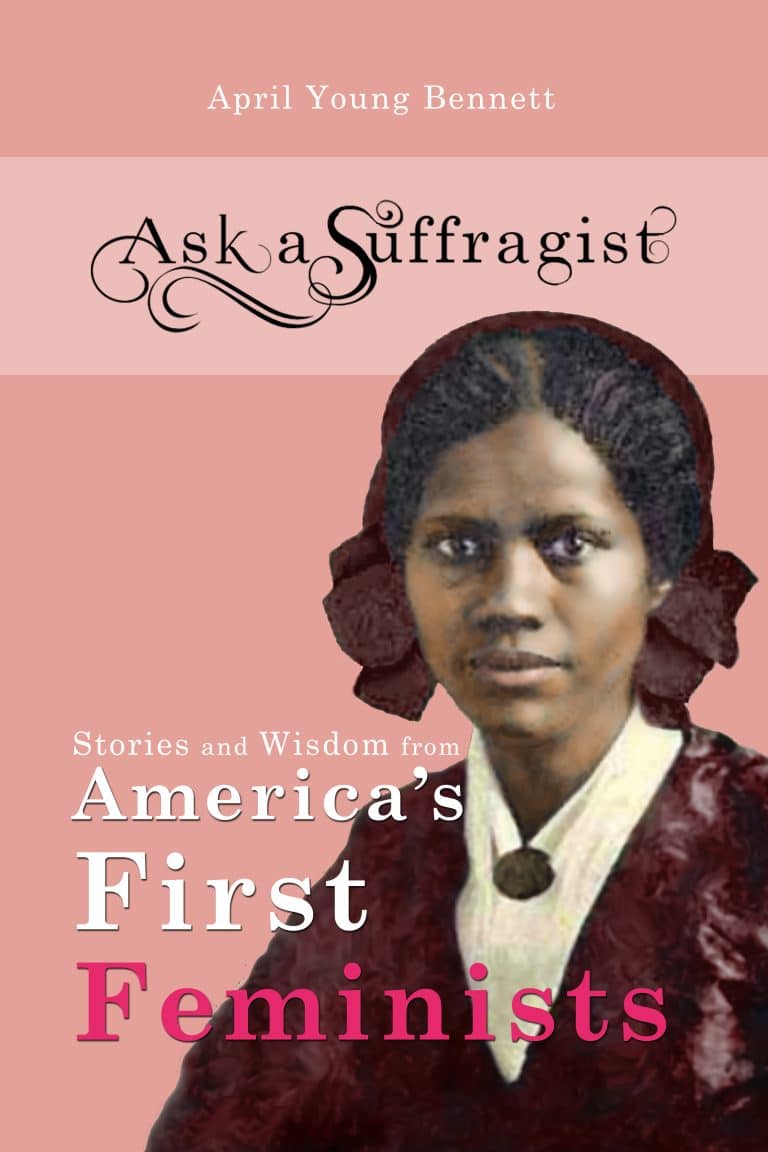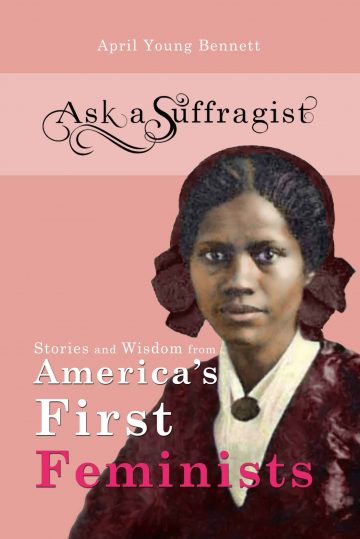
“Remember this, and hand it down to your children’s children for them to wonder at and laugh over in the good time coming,” Elizabeth Cady Stanton told the younger suffragists in her audience. “At the opening of the World Anti-Slavery Convention in London, on the 12th day of June 1840, delegates from Massachusetts and Pennsylvania Societies were denied their seats, simply on the grounds of sex.” [i]
I remembered her words when I heard these through the web browser on my cell phone: “Since these subjects are of equal concern to men and to women, I am pleased that these proceedings are broadcast and published for all members of the church.” [ii]
It was a strange thing to say to a male-only audience.
“This session is for the priesthood,” said the official at the door.
“Do men have to be ordained to the priesthood to attend?” I asked. “Do they even have to be members of the church?”
“Women are welcome to listen over the internet. Please step aside.”
Men and boys in dark suits hurried toward the tabernacle doors, dodging raindrops and looking straight ahead, trying not to see the growing crowd of women in drenched Sunday dresses.
I thought of Elizabeth Cady Stanton. After traveling 4,000 miles across the ocean to attend the World Anti-Slavery Convention in London, she was barred from the meeting but offered a seat in the balcony behind a curtain. Being silenced and hidden in that way inspired her to host the first women’s rights convention. [iii] Almost 200 years had passed, and yet I was listening to a male-only meeting over the Internet, the curtained balcony of my era.
The spirit of suffragist Alice Paul descended upon the Mormon feminist community in 2012 and prodded a resurgence of Mormon feminist activism. Mormon feminist Stephanie Lauritzen blogged about Alice Paul’s radical advocacy for women’s suffrage, lamenting that modern Mormon feminists were spending so much time blogging and too little time with more direct advocacy. She concluded, “Mormon feminists, I think it is time for some good old-fashioned civil disobedience.” [iv]
A few weeks later, we demonstrated our desire for equality in a way that was much more civil than disobedient. En masse, we unleashed our feminist fury by attending church—wearing pants instead of dresses.
I know. Showing up at church naked would have been interesting, but wearing pants? In 2012? The Church of Jesus Christ of Latter-day Saints has no rules against women in pants. While wearing pants at church is against the norm in our culture, it certainly isn’t forbidden, so why would anyone care? And yet, at least one Mormon man was so peeved that he threatened to shoot any woman who showed up at church in pants. [v] My mind was taken back to our suffragist foremothers, who received a similarly visceral reaction when they wore bloomers in the 1850s.
On the day Ordain Women launched, my name was among fewer than two-dozen organizers and supporters listed on its website. We tried to draw attention to the issue of female ordination in all kinds of ways: lobbying church leaders, social media campaigns and community art projects. We held prayer meetings and religious fasts for equality, often in collaboration with women of other faiths who were also seeking equality within their religious traditions. Support rapidly grew from two dozen to hundreds. No effort attracted as much attention as when hundreds of us marched to the male-only priesthood session of the church’s General Conference.
In those first years, Ordain Women moved at a frantic pace, with facebook providing a forum for incessant 24-7 brainstorming sessions. We thought the internet had changed everything. In the internet age, we reasoned among ourselves, curtailing freedom of speech would be impossible. There were too many venues where we could raise our voices and too many of us to silence through church discipline.
We were wrong. Church leaders didn’t need to punish everyone to intimidate the masses; going after a few well-publicized opinion leaders would do.
Being silenced by patriarchs never made a woman feel better about patriarchy. When religious leaders denounced abolitionists Angelina and Sarah Grimké for giving speeches to men (they thought women should listen to men, not vice versa) the Grimké sisters expanded their platform to support women’s rights alongside abolition. Speaking out while female was dangerous back then; when Angelina addressed the Philadelphia Female Anti-Slavery Society in the newly erected Pennsylvania Hall, an angry mob attacked, burning the building to the ground.
Modern Latter-day Saint priesthood leaders generally aren’t arsonists, but in other ways, the story seemed familiar. I began to wonder if we weren’t recreating the wheel with our frantic brainstorming—the world had not changed as much as we thought, and certainly some of the feminists who came before us had already addressed some of the problems we were facing. What could we learn from our foremothers?
I wanted to read something about this era—one book, preferably, because I was busy—but broad enough to impart the wisdom of activists from a variety of racial and socioeconomic backgrounds. I didn’t want it to be limited to the most famous people because in my experience, movements are built by communities of rank-and-file workers, not solitary heroes. And while history can be fascinating, I was in a hurry—I had urgent causes to support—so I wanted something that focused on what was most pertinent to my modern concerns, like relationships, strategies and activism, but that would be lighter on dates, meeting minutes and genealogy charts.

I didn’t find that book. So I read everything: memoirs, biographies, history books, archived letters and diaries, even those boring meeting minutes. I asked suffragists my questions and they answered me, but they didn’t all agree with each other; they were a diverse, opinionated bunch. In their lives, I saw much to emulate and many pitfalls to avoid. The people who came before us were as deeply flawed as they were passionate and inspiring.
Several years later, I’ve written the book that I wanted to read back when I started this journey. I call it Ask a Suffragist: Stories and Wisdom from America’s First Feminists. Each chapter focuses on one question modern activists might ask our feminist foremothers, answered by the lived experiences of the women and men who started the American feminist movement.
It is available for pre-order now and will launch on June 4, 2019, the 100th anniversary of the day Congress approved the Nineteenth Amendment and sent it to the states for ratification, which would grant (most) American women the right to vote. This was an event most of the women and men in my book did not live to see, and none of them were around when the voting rights promised by the Nineteenth Amendment became a reality for Native American women and Southern black women decades later.
Buy my book in any format (hardcover, kindle, audiobook, or large print) by June 30, 2019 and send an email to [email protected] with the words Illustrated Companion in the subject line and a photo or screenshot of your receipt as an attachment, and I will send you a free e-copy of the Illustrated Companion to the book, complete with pictures of the people, places and events described in the book and discussion questions for your book club or activist organization.
You can get more information about the Ask a Suffragist project at askasuffragist.com.
[i]Elizabeth Cady Stanton (May 13, 1858) Address to the Eighth Annual Woman’s Rights Convention.
[ii] Oaks, Dallin H. (April 5, 2014) The Keys and Authority of the Priesthood
[iii] History of Woman Suffrage Volume I. Elizabeth Cady Stanton, Susan B. Anthony and Matilda Joslyn Gage, eds.: Rochester, New York: 1881.
[iv] Stephanie Lauritzen (December 5, 2012) The dignity of your womanhood… The Mormon Child Bride Capitalization standardized.
[v] Timothy Pratt (December 19, 2012) Mormon Women Set Out to Take a Stand, in Pants. New York Times






4 Responses
This is so exciting! Congratulations, April! I can’t wait to read it.
This book sounds wonderful! I look forward to reading it.